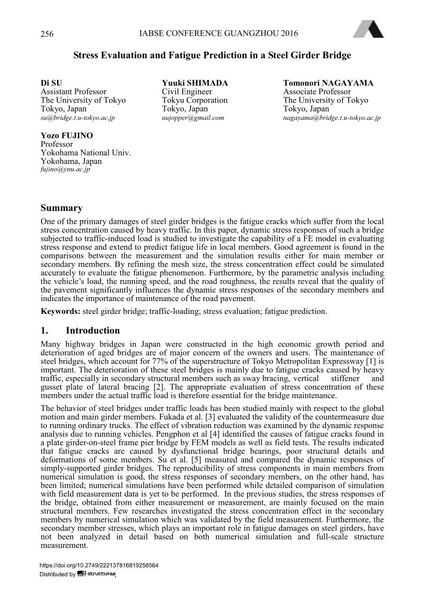Stress Evaluation and Fatigue Prediction in a Steel Girder Bridge

|
|
|||||||||||
Bibliografische Angaben
| Autor(en): |
Di Su
Yozo Fujino Yuuki Shimada Tomonori Nagayama |
||||
|---|---|---|---|---|---|
| Medium: | Tagungsbeitrag | ||||
| Sprache(n): | Englisch | ||||
| Tagung: | IABSE Conference: Bridges and Structures Sustainability - Seeking Intelligent Solutions, Guangzhou, China, 8-11 May 2016 | ||||
| Veröffentlicht in: | IABSE Conference, Guangzhou, China, 8 – 11 May 2016 | ||||
|
|||||
| Seite(n): | 256-263 | ||||
| Anzahl der Seiten (im PDF): | 8 | ||||
| Jahr: | 2016 | ||||
| DOI: | 10.2749/222137816819258564 | ||||
| Abstrakt: |
One of the primary damages of steel girder bridges is the fatigue cracks which suffer from the local stress concentration caused by heavy traffic. In this paper, dynamic stress responses of such a bridge subjected to traffic-induced load is studied to investigate the capability of a FE model in evaluating stress response and extend to predict fatigue life in local members. Good agreement is found in the comparisons between the measurement and the simulation results either for main member or secondary members. By refining the mesh size, the stress concentration effect could be simulated accurately to evaluate the fatigue phenomenon. Furthermore, by the parametric analysis including the vehicle’s load, the running speed, and the road roughness, the results reveal that the quality of the pavement significantly influences the dynamic stress responses of the secondary members and indicates the importance of maintenance of the road pavement. |
||||
